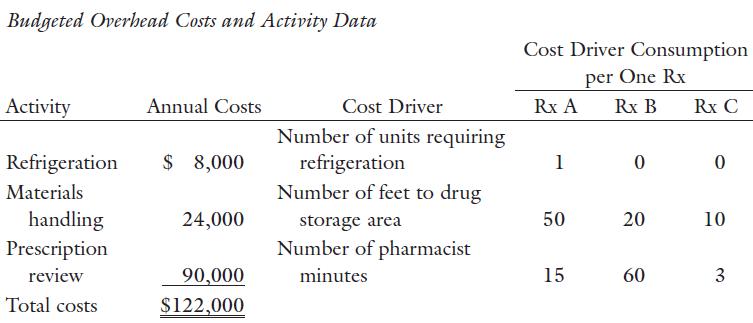A hospital pharmacy fills three types of prescriptions. Prescription A requires refrigeration to maintain the drugs activity.
Question:
A hospital pharmacy fills three types of prescriptions. Prescription A requires refrigeration to maintain the drug’s activity. Prescription B has potentially fatal interactions with other drugs and therefore requires careful review by a pharmacist. Prescription C is a basic, common drug that presents little risk to the patient. Prescription A is a brand-name drug still on patent, and therefore the charge for the drug is high relative to its cost. Consider the following data for the hospital pharmacy:

a. Using the cost-to-charges ratio (CCR) method, determine the overhead that would be allocated to each type of prescription, A, B, and C.
b. Determine the total cost (Direct cost + Indirect cost) of filling one of each type of prescription if overhead is allocated using CCR.
c. Using ABC techniques, determine the allocation rate for each overhead activity and determine the overhead that would be allocated to each type of prescription, A, B, and C.
d. Determine the total cost (Direct cost + Indirect cost) of filling one of each type of prescription if overhead is allocated using ABC techniques.
e. Explain the reasons for the difference in the full cost of each prescription in parts b and d.
Step by Step Answer:

Gapenski's Healthcare Finance An Introduction To Accounting And Financial Management
ISBN: 9781640551862
7th Edition
Authors: Kristin L. Reiter, Paula H. Song





